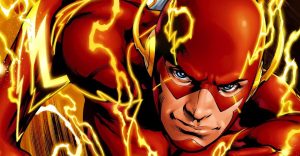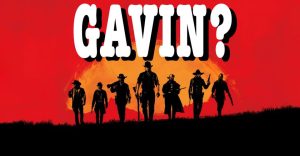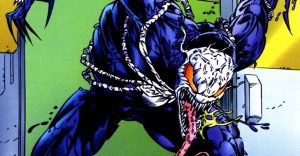Ant-Man Can Communicate With All Insects, Not Just Ants

Communication is something that all heroes in Marvel Comics rely on, but perhaps no hero depends on it more than Ant-Man. Using a suit and helmet that allows him to communicate with ants, Ant-Man operates with a level of inter-species collaboration that makes him unique on Marvel’s roster. And while Ant-Man is known best for his reliance on ants, they are not his only group of insect allies. On a few occasions, Ant-Man has teamed up with bees to take down his foes.
Both the Henry Pym and Scott Lang iterations of Ant-Man have used bees and other insects in battle. The way they communicate to the insects is through electrical signals pinged from the “antennae” on their helmets, which then travel to the antennae of the ants and bees. This replicates the process that ants and bees go through when communicating to each other in the wild.
This ability that is built into the technology of the Ant-Man suit makes him more versatile in the field than one might expect. After all, Earth’s insect population greatly outnumbers the human population, giving Ant-Man a significantly larger group of potential allies than his colleagues. It is through harnessing the power of insects that Ant-Man achieves astonishing feats that few heroes could ever pull off.

Scott Lang’s Ant-Man most recently collaborated with bees in Ant-Man #1 and #2 by Zeb Wells (inks by Dylan Burnett, colors by Michael Spicer, and letters by VC’s Cory Petit). Called in to investigate the disappearance of bees on behalf of the Florida Beekeepers Association, Scott initially bemoaned his reputation as the superhero who “talk[s] to bugs,” before figuring out that he can direct the bees to form a protective suit around him. The result was somewhat horrifying to the hero, but nonetheless effective.
Likewise, in Avengers #71 from 1969, Henry Pym as Yellowjacket mobilized the swarming effects of bees to his advantage. In a story written by Roy Thomas, with pencils by Sal Buscema, inks by Sam Grainger, and letters by Sam Rosen, Yellowjacket fought alongside the Vision and Black Panther in Paris. Facing off against Namor the Sub-Mariner, Pym conjured a swarm of bees that overwhelmed him so much that they punctured his skin. This is no small feat considering that Namor is half Atlantean.
Lastly, the ability for Ant-Man to communicate to insects extends far beyond the bounds of Earth. On one occasion, in Tales to Astonish #41, Henry Pym was kidnapped by aliens led by Kulla, a self-described “war lord,” and transported to another dimension (plot by Stan Lee, script by Larry Lieber, art by Don Heck, and lettering by Art Simek). Thrown into a dungeon, Pym hatched a plan to free himself and other kidnapped scientists as Ant-Man, and mobilized the cell’s alien insects after changing the frequency on his helmet to communicate with them.
Between bees and ants, Ant-Man demonstrates a reliance on collectively-minded insects. His helmet allows him full control of an organized insect collective, and he suffers far less mishaps than other heroes because of it. This aspect of Ant-Man’s identity has always proven that heroism occurs on a variety of scales, and that allies can be found in the most unlikeliest of places.
About The Author


















